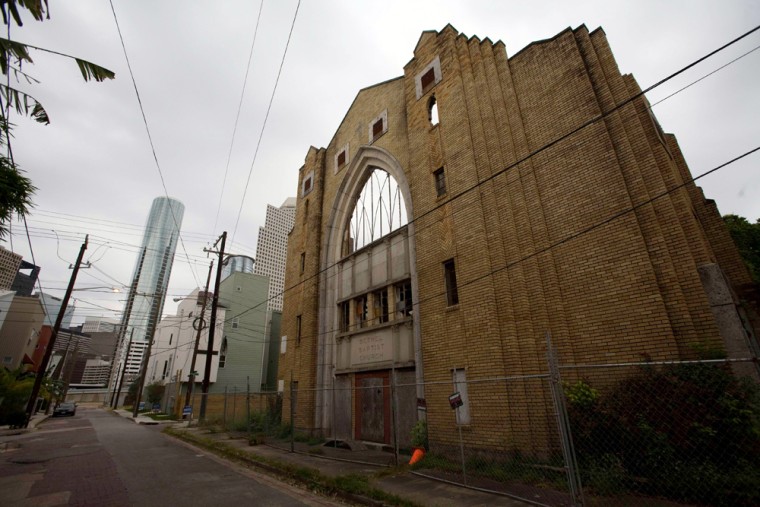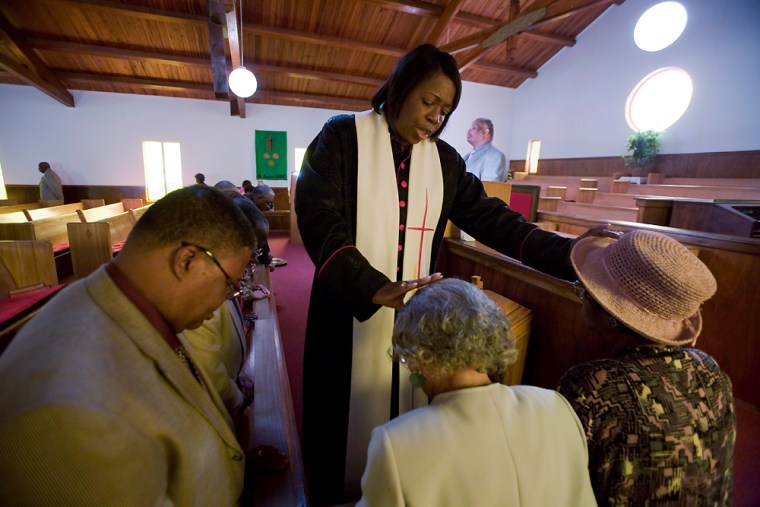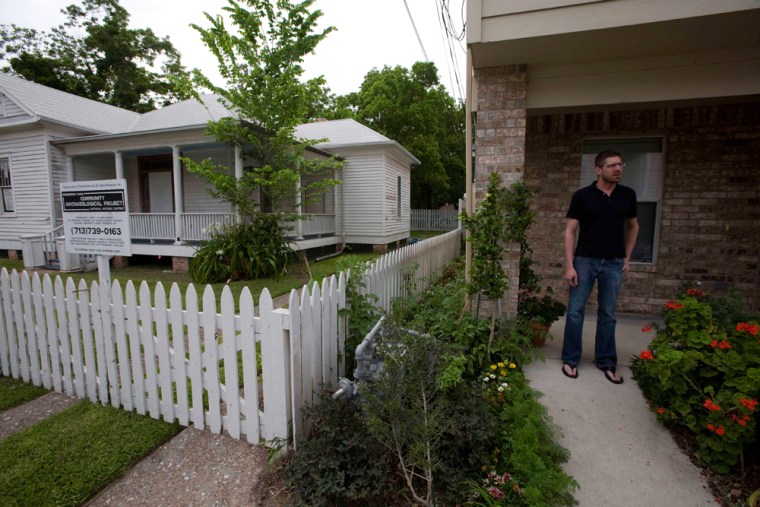The day Mount Carmel Missionary Baptist Church crumbled into shards of bricks and a pile of rubble, tears filled the eyes of the people who had tried to save the historic structure.
But their grief was not just for this 68-year-old building in the heart of Houston's Fourth Ward.
On this recent Friday, the solemn and stricken group was also crying for all the other now-vanished fragments of Freedmen's Town, the nation's only remaining post-Civil War historic district built by freed slaves.
They mourned for Bethel Baptist Church, a majestic century-old structure reduced to a scorched hull by a fire four years ago, and for the shotgun-style houses on Victor Street, where Houston's first African-American teachers, lawyers, and brickmasons once lived and which now seem abdicated to neglect.
They lamented the loss of dozens of historic homes and churches that have been demolished to make room for markers of a new Houston — a modern metropolis of glass-walled skyscrapers, newly built urban lofts and chic cafes and restaurants.
"One person's historical structure is another person's blight," Houston Mayor Bill White said.
Ongoing clash between old and new
The pattern has been repeated countless times in other cities, where gentrification and urban redevelopment have displaced residents and swallowed cultural landmarks in long-established African-American neighborhoods.
But in Houston, a city hungering for recognition as a place of glitz, power and progress, the tug-of-war between preservation of the old and celebration of the new is especially stark.
"We're just trying to preserve what's left of Freedmen's Town. The Fourth Ward symbolizes our community," said Debra Blacklock-Sloan, the historian of the Rutherford B.H. Yates Museum, which works to preserve the district's history.
"There's going to be development, but it needs to be harmonious between new development and old," she said.

Freedmen's Town traces its beginnings back to 1866, when emancipated slaves first settled in tents and shanties on the banks of Buffalo Bayou, swampy land no one else wanted. Soon, the new settlers — many of whom were skilled stone masons and carpenters — had built homes, businesses and brick churches and paved the streets with bricks they forged themselves.
For decades, Freedmen's Town was the epicenter of Houston's African-American community, a thriving enclave of professionals, educators and businessmen. But the Depression caused homeowners to lose their properties.
Many left Freedmen's Town for other Houston neighborhoods. Others stayed and watched as their community slid into disrepair. Over the years, antique scavengers poached architectural artifacts from occupied homes, yanking gingerbread trim, front porch columns, and carved railings off houses while residents were inside.
In 1984, Freedmen's Town was designated a historic district in the National Register of Historic Places. At the time, 530 historic structures stood in the 40-block area. Today, 30 structures remain. Eight of its 19 churches are standing.
Re-development pushes out residents
In the 1990s, after developers and city planners discovered the neighborhood just outside downtown, blocks of modern low-income housing, mid-income townhouses and upscale lofts began to push the old structures and residents.
The new residents are drawn in by the lure of an urban chic lifestyle, and financial incentives attracting a new mostly white population, replacing the African-American families who could trace their roots to the original settlers.
"To see these houses disappear, hundreds of them, and people forced out of their homes and the whole history try to be erased from this area is just sickening," said Catherine Yates, also with the museum.
The new residents are more interested in improving city services and infrastructure than saving aging buildings. They are viewed with suspicion and sometimes, hostility, said John Obsta, the New Fourth Ward Homeowners Association president.
"It is awkward for us. We do respect the older residents, but there are challenges our community faces that others don't," said Obsta, who moved to Freedmen's Town four years ago and represents about 250 other new homeowners. "I've come to love this area of town, and to know its history."
But, Obsta said, the older, often neglected, buildings draw drug dealers and transients, and some structures seem beyond repair, as Mount Carmel did.

Obsta said he is trying to ease the friction between the two sides, and points to a task force formed recently to bring old and new homeowners together. One of the first issues they tackled were the neighborhood's iconic brick streets, which were laid with a cross pattern traced back to Africa.
New residents want the city to improve water and sewer lines, and the bricks would have to go. Preservationists adamantly oppose any plan to disturb them. Now the panel recommends the city tunnel under the bricks to replace the lines.
Burned by promises
But preservationists said they have been burned by promises before.
Neighborhood boosters had been seeking historic landmark status for the remaining churches, including Mount Carmel. They hoped to create a "sacred corridor" they liken to the preservation of historic missions of San Antonio.
Last month, they believed they'd won a small victory when Mount Carmel and another church received landmark approval from the city's historical commission — the first step toward securing the status — after more than a year of waiting.
Last Friday, the 68-year-old church crumbled.
Sally Wickers, executive director of the Freedmen's Town Coalition of Pastoral Leaders, said church leaders could have applied for grants to speed a planned restoration if the city had moved faster to designate the building a landmark.
Houston Mayor Bill White's spokesman, Frank Michel, said city landmark status would not have saved the building. He said it had not been maintained for years. He said the city has been making progress, citing the brick streets plan and the recent groundbreaking for a planned African American library and archives.
Wickers said the community was built by people "struggled, who went through all they went through in bondage, then one day to be freed with nothing, to pull themselves up by their bootstraps to start a new life.
"Blood, sweat and tears went into the formation of this community," she said. "It's not just important to African American history but important to American history."
